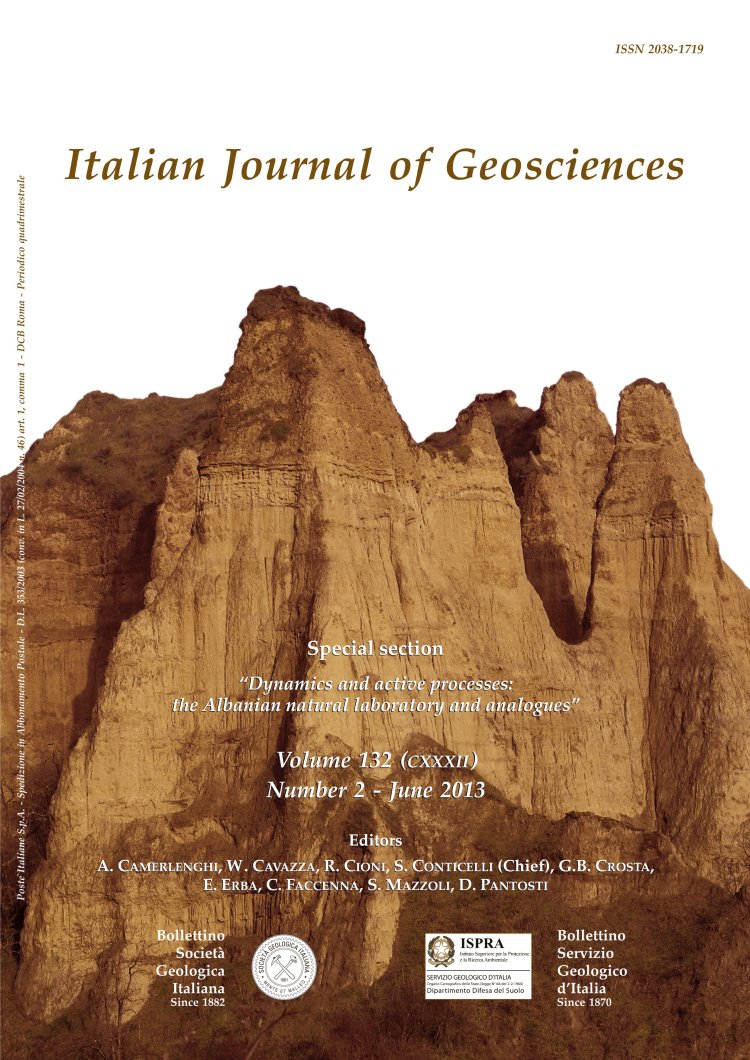
Evolution of an Upper Pleistocene aeolianite in the northern Mediterranean (Liguria, NW Italy)
Marta Pappalardo(1), Alessandro Chelli(2), Andrea Ciampalini(3),(4), Ivano Rellini(3), Federica Biagioni(1), Helmut Brückner(5), Alexander Fülling(6) & Marco Firpo(3)
(1) Dipartimento di Scienze della Terra, Università di Pisa, Italy.
Corresponding author: tel. +39 050 2215748, fax +39 050 2215800, E-mail: pappalardo@dst.unipi.it
(2) Dipartimento di Fisica e Scienze della Terra "M. Melloni", Università di Parma, Italy.
(3) Dipartimento per lo Studio del Territorio e delle sue Risorse, Università di Genova, Italy.
(4) Current address: Dipartimento di Scienze della Terra, Università di Firenze, Italy.
(5) Institute for Geography, Universität zu Köln, Germany.
(6) Department of Geography, Humboldt-Universität zu Berlin,Germany.
Volume: 132 (2013) f.2
Pages: 290-303
Abstract
Based on a 19th century scientific report, a recent geological survey has highlighted the presence of a complex, mostly Aeolian deposit along the coast of Liguria (Laigueglia, Savona Province, NW Italy). This finding was recognized to be a relevant palaeoclimatic marker, being the northernmost aeolianite outcrop ever reported from the Mediterranean Basin. The investigated deposit is spread along a steep sea-facing slope from 2-3 m up to almost 60 m a.s.l.; it is strongly reworked due to recent urbanization of the area. Its stratigraphic features were recognized thanks to its exposure in different sections and analysed in order to obtain reliable indications on the sedimentary environments. Facies analysis suggests that the sedimentary body is a relict cliff-top dune evolved on top of a foreshore deposit in temperate-cold and moist climate conditions. Two samples from the upper, strictly aeolian part of the sequence were subjected to OSL (Optically Stimulated Luminescence) dating and yielded an age consistent with its deposition during the Marine Isotopic Stage (MIS) 5.2 and 5.1 substages (88-83 and 83-71 ka). This paper contributes to the increase of the number of Upper Pleistocene coastal aeolianites accounted for in literature. Being located at the northern border of the occurrence of aeolianites in the northern Mediterranean, it helps to outline climatic and environmental boundary conditions for the formation of this type of deposit.
Keywords
Get Full Text